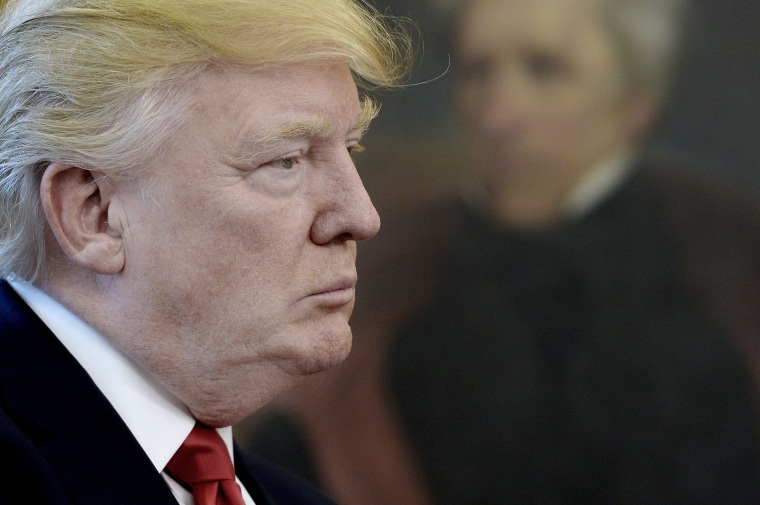Winning power is one thing. Wielding it is another. Just ask the Republican Party.
The GOP holds both houses of Congress and the White House, but so far it has struggled for a major achievement. Last week’s collapse of health care reform offers the most prominent example.
What’s holding Republicans back? The numbers suggest two big problems for the party. One, President Donald Trump’s low poll numbers mean lawmakers don’t feel a powerful need to follow him. And two, the splits within the party are about more than just details. They are significant political and philosophical differences.
On Friday, Gallup’s daily presidential tracking poll showed Trump was at 38 percent approval. For a man on 71st day of his presidency, that figure is abysmal. He is well below any of his predecessors at this point.

To put it bluntly, 38 percent is not the kind of number that scares a wayward congressman if the chief executive says “follow me or else” — essentially Trump’s threat to members of his party this week.
And Gallup is not alone in giving Trump poor numbers. Across a wide range of polls, his approval number is not near 50 percent.
That lack of a powerful, popular leader only heightens the GOP’s other problem: The deep differences running through it.
The GOP won in 241 districts in November (there are 237 now after cabinet appointments) and the party needs 216 votes to have a majority. That means they can afford to lose 21 votes. Now consider some of the differences in the House districts that the GOP won.
Trump’s feud with his party last week centered on the Freedom Caucus, a group of 32 conservative House members that the president and members of his administration subsequently promised to “fight” in the midterm elections of 2018. One potential impediment to Trump's tough talk: In 29 of those 32 districts, the Freedom Caucus member out-performed Trump on Election Day.
So even if Trump is popular in those places, the House members are likely more popular. That doesn’t mean they’d be completely safe from Trump’s promise to “fight,” but it at least suggests they feel pretty comfortable standing up to the president.
In 23 House districts held by Republicans, Hillary Clinton was actually the winning presidential candidate. In another five districts, she lost to Trump by less than 2 points. The representatives in those 28 districts may find it very easy to go against the president — they might even see opposing Trump as being in their best interest with the president whose approval rating is mired in the high 30s.
Related: Trump Aide Dan Scavino Calls for ‘Defeat’ of GOP Rep. Justin Amash
And at the other end of the spectrum, 42 of those House GOP districts gave Trump 66 percent or more of their vote — that’s 20 points better than Trump did nationally. Those places are likely going to be pro-Trump even as his numbers slip.
Or look at the House GOP split through the frame of policy. Cuts to Medicaid proposed by the failed Republican health care bill would have had a significant impact. One in five Americans, 20 percent, get their health insurance through Medicaid.
In 24 GOP-won House districts, 20 percent or more of the population gets insurance through Medicaid. But in another 27 House districts, less than 10 percent of the population gets insurance through the program.
It only stands to reason that voters in those districts might have very different ideas about the role the government should play in health care and, perhaps, the role of government aid in a broader sense.
Add it all up and you have a very complicated, diverse coalition without a strong force to hold them together.
Last week, in the wake of the GOP’s failure to pass a bill repealing and replacing the Affordable Care Act, some party leaders said that Republicans needed to re-learn how to govern.
"We've been an opposition party for ten years,” House Speaker Paul Ryan said in an interview. “We've got to become a proposition, governing party."
That may be true, but considering the fragmented nature of the party and the politically weak power at the top, it will not be easy.
